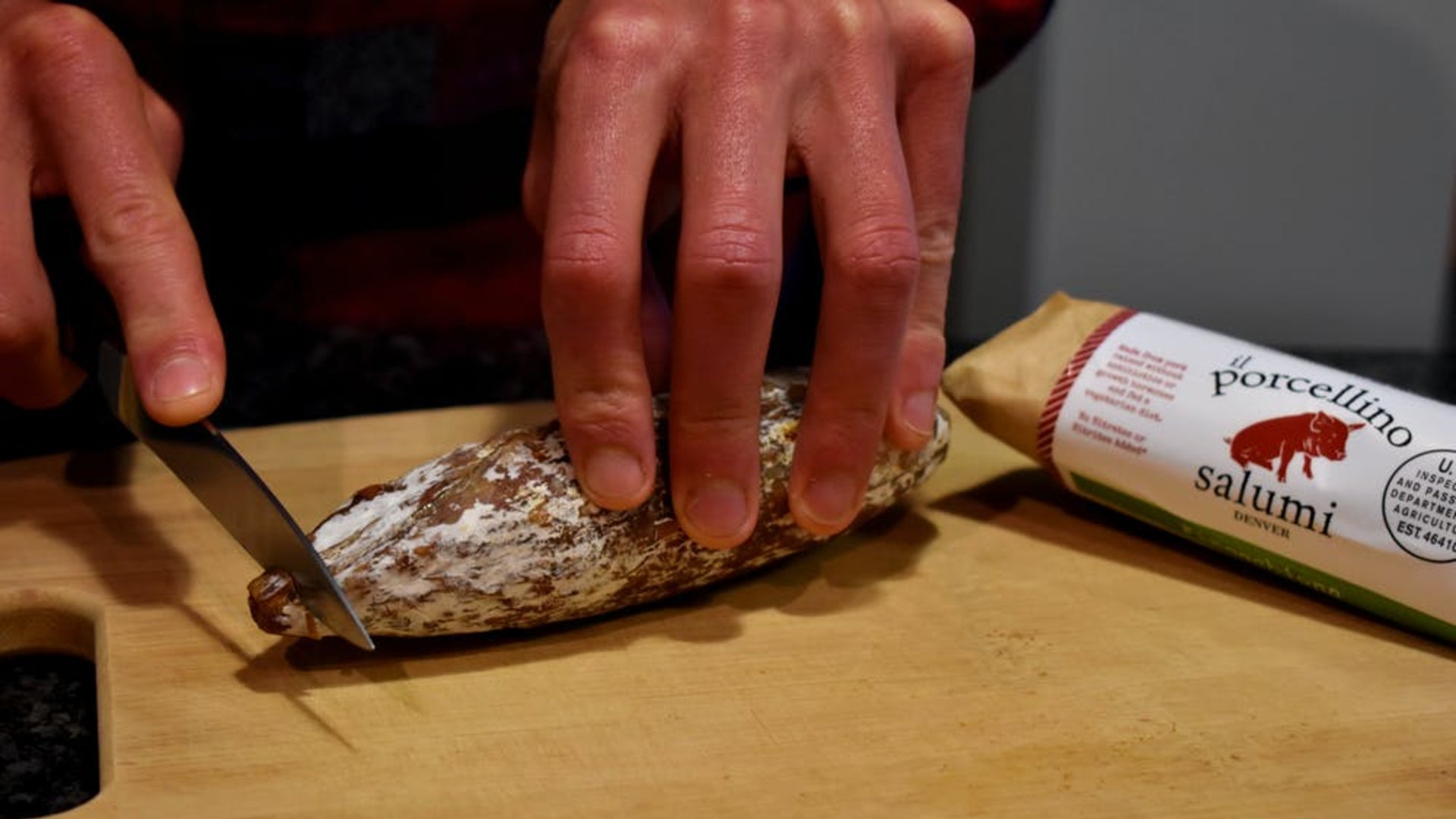W Was Hat Are Black Specks in Beef Cotto Salami
What is the White Powdery Stuff on My Salami?
October 8, 2020
It's mold. Yup, you read that right. The powdery stuff on your salami is mold, but it's the good kind of mold, and it's completely edible. We get this question a lot, and it's usually with a frantic tone because, well, bad mold can be harmful. Here I'm going to break down what kind of mold is on our salami and why there is mold on our salami. So let's clear up the confusion!
What is the mold on my salami?
When you open up one of our salamis from the packaging, you will immediately notice a white mold coated outside the salami. Don't worry; it's supposed to be there! It is a penicillin-based mold similar to the white mold you will find on a fine cheese like a French Brie or Camembert. It's a natural part of the fermentation process of producing artisanal salumi, and the salami mold has its own flavor and flora.

Why is there mold on my salami?
Simply put, the mold protects the salami from bad mold and bacteria.
We stuff our salami into all-natural casings , and as part of the process, we inoculate a mold solution onto the casings by soaking them before stuffing them. Once the casings are stuffed with salami, they are put into our climate-controlled fermentation rooms set at 100% humidity and 75 degrees. Obviously, that's not the ideal temperature to store meat, but it is the perfect climate to ferment our salumi.

Now that the salami is in our fermentation rooms, the fermentation process begins and is an integral part of making salami. During fermentation, the lactic acid starter culture feeds on sugars that are part of our recipes. The sugar is consumed by the starter culture, which lowers the meat's pH to a safe level. This process is critical and creates the unique, tangy flavor that is present in our salami.
(Little fact; we're required to list the sugar in our recipes on the product ingredient list, but the sugars are not present in the final product. The starter cultures consume all the sugar. We can't call the product "sugar-free", but there are indeed no residual sugars in our finished salami.)
As the salami pH reaches a level below 5.0, the fermentation process kills any harmful bacteria present in the raw pork we use. Plus, as the salami ferments, all of that beautiful white penicillin-based mold blooms and starts to form a luscious white coat on the salami's exterior.

After fermentation, the salami is moved to our climate-controlled drying rooms, where the mold continues to bloom throughout the drying process. This is where the penicillin-based mold really starts doing its job. The mold protects the salami from any harmful bacteria getting inside the product. It serves an essential purpose and is part of what we call the "terroir" of our product, giving our salami a unique flavor and flora, similar to fine wine.

Is the mold on my salami dangerous to eat?
The mold is not dangerous to eat. Of course, you can easily remove the casing if you prefer not to eat the mold. The mold does have a unique flavor and flora that it adds to our products.
Personally, I do not eat the casing or the mold on our salami, as that is my preference. I feel like what is inside the casing is what I want to taste, but I know plenty of people who enjoy eating the exterior. So, the choice is up to you but know that the salami mold isn't going to hurt you.

Why does the mold look different than last time?
The mold that we use to produce our salami is 100% natural and can bloom into different colors throughout the drying process. I have seen hues of blue, green, grey, and yellow, all of which are entirely natural and safe.

Again, the mold is present to protect the product from other competing mold or bacteria growth during the drying process. This good mold does indeed protect the salami from any potentially harmful molds present in the environment. And, it helps our products dry slowly and evenly to produce a genuinely supple finished product.
Does the mold on salami require special handling?
You do not need to worry about touching or removing too much mold when you're handling the salami. Feel free to get a good grip on the salami when cutting it. The mold will not hurt you if you touch your face or put your finger in your mouth after holding the salami.

As part of the home storage process, I recommend storing your il porcellino salumi in one of the crisper drawers in your refrigerator. Once you open and cut the salami, rewrap the product in its paper packaging and store it inside an unsealed ziplock bag. Keeping the salami this way allows the product to continue to "breathe." The salami and the mold itself do indeed require oxygen to continue to grow. If the airflow is cut off, then the mold begins to die and will create an unpleasant aroma and flavor. Our salami has a shelf life of nine months when stored correctly in your home refrigerator.
Now you can stop worrying and just enjoy the salami.

Source: https://www.ilporcellinodenver.com/blogs/bills-blog/salami-mold
0 Response to "W Was Hat Are Black Specks in Beef Cotto Salami"
Post a Comment